TCL RayNeo Air 2 review: The augmented reality future
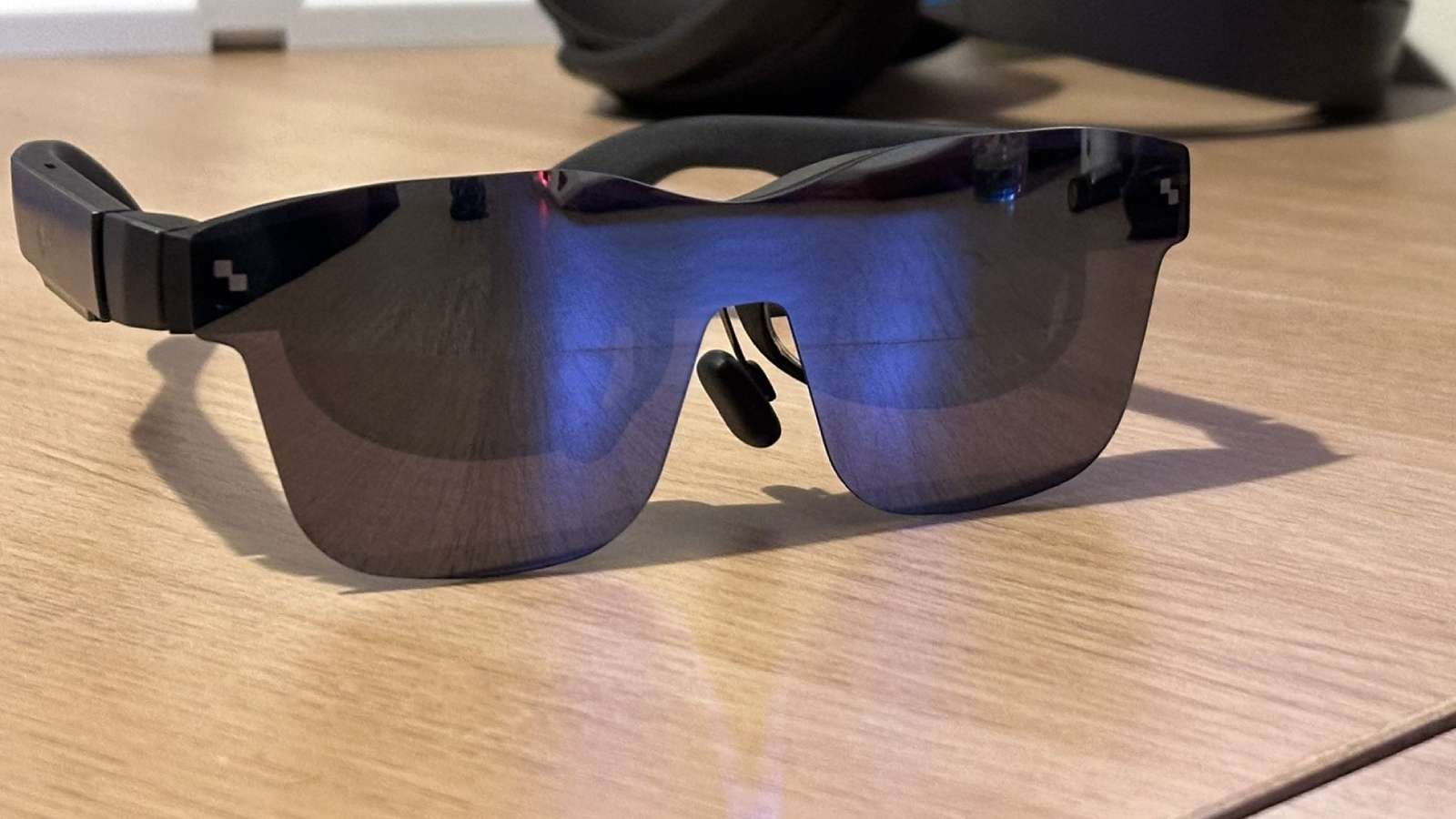 Dexerto
Dexerto TCL launched its Rayneo Air 2 AR glasses recently, and I’ve spent tens of hours testing it to tell you if this cutting-edge tech is ready for mass market adoption.
AR glasses are a new kid on the block, offering cutting-edge displays and tiny form factors that you can carry around with you. The “AR” nature of the glasses is somewhat of a misnomer, however, as the hardware itself essentially allows you to output a several-hundred-inch display right up against your face.
While we’ve looked at other glasses from TCL and other brands, this was the first I had personally tested, and it was an eye-opener into the future.
Key specs
- Screen: MicroOLED
- Resolution: 1920×1080 per-eye
- Brightness: Up to 600 nits
- Contrast ratio: 100,000:1
- Brightness: Up to 600 nits
- Field-of-View: 46-degrees
- Refresh rate: 120Hz
- Projected image: 201-inches
- Features: Speakers, USB-C output, 76g weight
Design
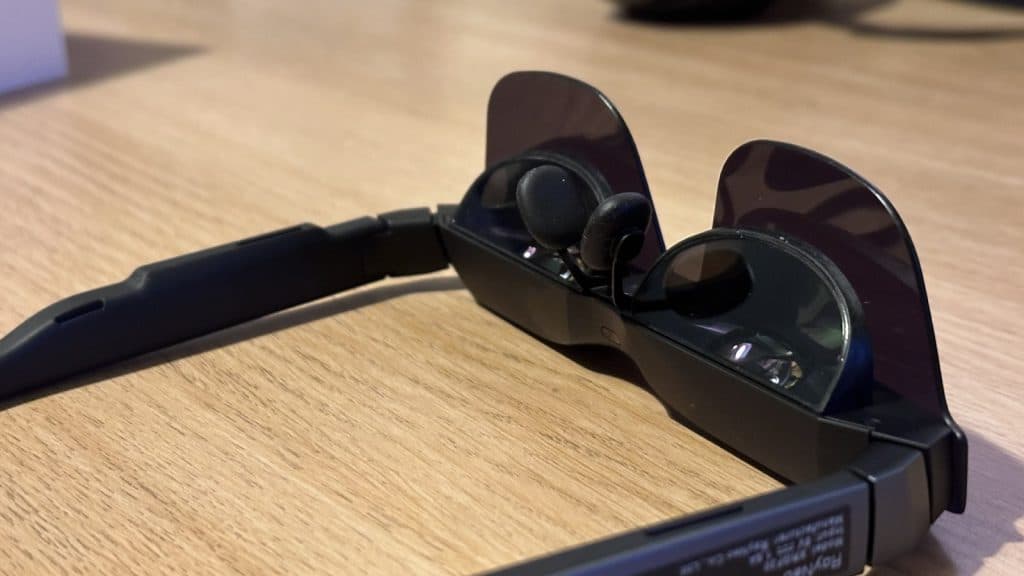 Dexerto
Dexerto On the outside, the TCL RayNeo Air 2 glasses might just look like another pair of anonymous sunglasses, but there’s much more going on under the surface. The frame is slightly thicker than usual at the top to accommodate for a bright, Sony-produced MicroOLED 1080p panel to reflect through a piece of glass. Due to this, the glasses sit slightly lower on your head than you might expect.
There are also additional controls on each of the stems, a volume rocker on the left, and a brightness rocker on the right. At the end of the left stem is a USB-C port, where the device will search for a DisplayPort (USB-C alt mode) signal and power the device itself.
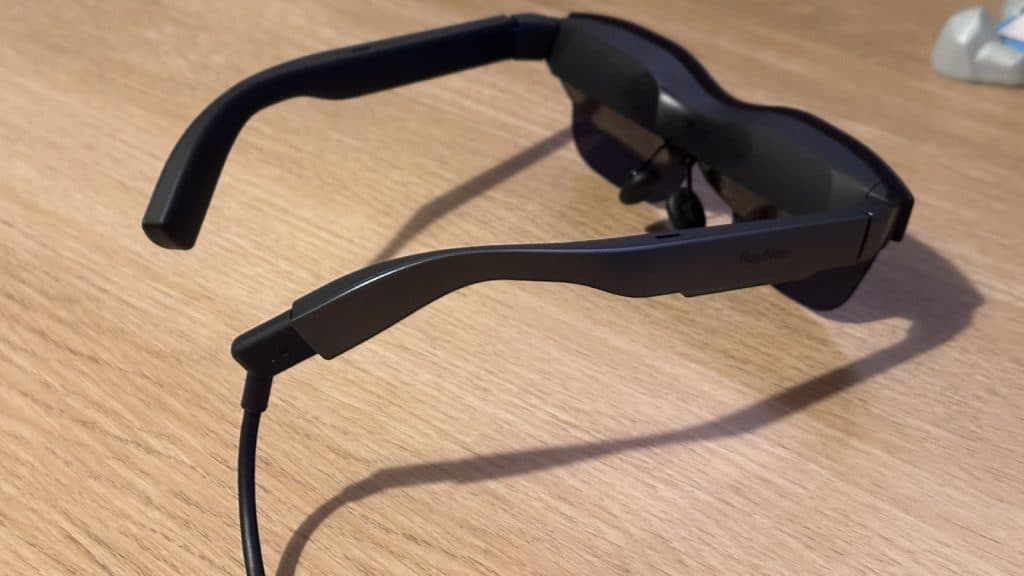 Dexerto
Dexerto Each stem can be tilted, allowing for a better fit for the screens and your head, with an adjustable nose stem that helps it fit on just about any face. You can also equip this with additional prescription lenses, but you’ll need to reach out to TCL directly to get them all fitted.
It makes for a nice, clean, and compact look, and having tried it out, it can take some getting used to. At only 76g, it just feels like a (slightly heavier) pair of glasses. When putting them on, and getting all of the angles on your head just right, it turns into a visual feast for the eyes.
Features
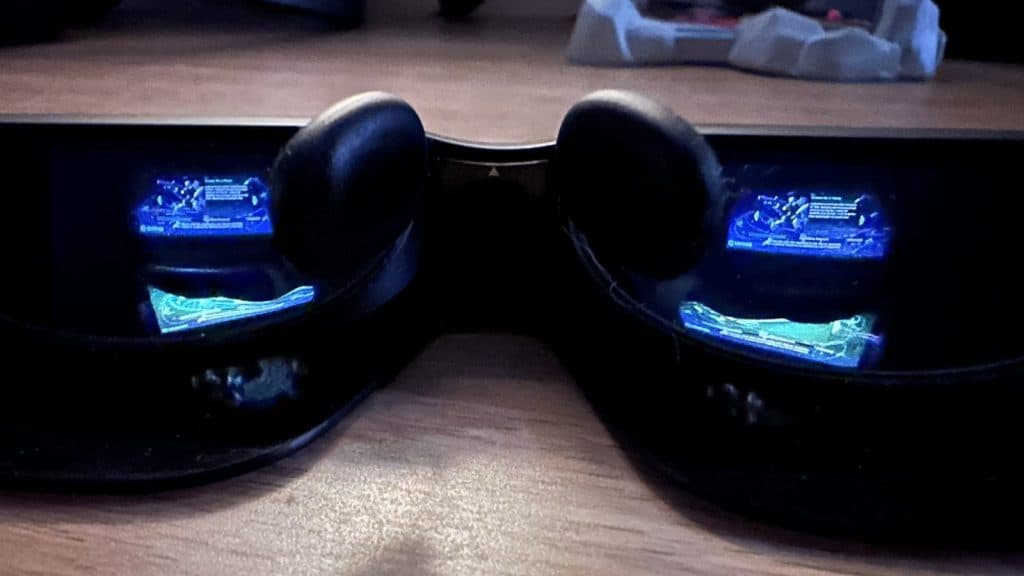 Dexerto
Dexerto The MicroOLED screens used in the TCL RayNeo Air 2, when positioned perfectly, look great. These screens will likely make their way into the Apple Vision Pro. I quickly hooked it up to my Android tablet using the included USB-C cable, and it seamlessly streamed the Dune: Part Two trailer straight into my eyes, and everything from the black levels, to the way that content looked was fantastic.
Right off the bat, I was stuck at how great content looked. Running the glasses at a smooth 120Hz meant that navigating Windows and MacOS through my Ayaneo Air 1S and MacBook Air was a cinch, and playing lower-end games like Vampire Survivors allowed for a buttery-smooth experience.
Black levels were great, and you still feel present in any room that you’re using them in, which is a boon for me, as VR so often feels restrictive and anti-social, as I found while reviewing the PSVR 2 and Meta Quest 3.
Abberation manifestation
I happened to get quite sick during the duration of the testing period, meaning that I was wrapped up in bed for a while with not much to do but lay down and get better. Luckily, I had the TCL RayNeo Air 2 glasses, an Ayaneo Air 1S, and a copy of Star Ocean: The Second Story R to dig into. The glasses quickly picked up the handheld, and I managed to get straight into the game.
First off, the screen size is absolutely striking, you feel so much more connected to games that you play, but I was quickly met with one huge problem. Abberation. The corners of each part of the screen can appear blurry, or fuzzy, which detracts from the overall experience. This wasn’t much of a problem while I was using it to watch Pluto on Netflix, but became a bigger issue in Star Ocean.
For a text-heavy game like Star Ocean: The Second Story R, I was left squinting a little bit too often for my liking. Secondly, this screen gets pretty bright, so I also turned that down several notches. Thirdly, the audio output can be slightly tinny, especially if you are pumping up the volume. Grab a pair of earbuds, and you’ll have a much better time.
I used these for three hours straight
While I was tucked up in bed, I eventually got used to the squinting and managed to use them for around three hours straight. I don’t recommend most people do this, as I found myself with a fairly sorry headache after testing. It can also make your eyes feel quite strange afterward.
Not quite true AR
The RayNeo XR app is where all of the AR features lie, and getting this all up and running, it was a chore. I had to hook my (aging) Pixel 2 XL up to a MiraScreen portable adapter that TCL sent over for it to work in the first place, and from there I was greeted with a handful of 360 videos, as well as other tech demos that were relatively unremarkable. There’s not much content here, and it just feels a little bit too early.
Should you buy it?
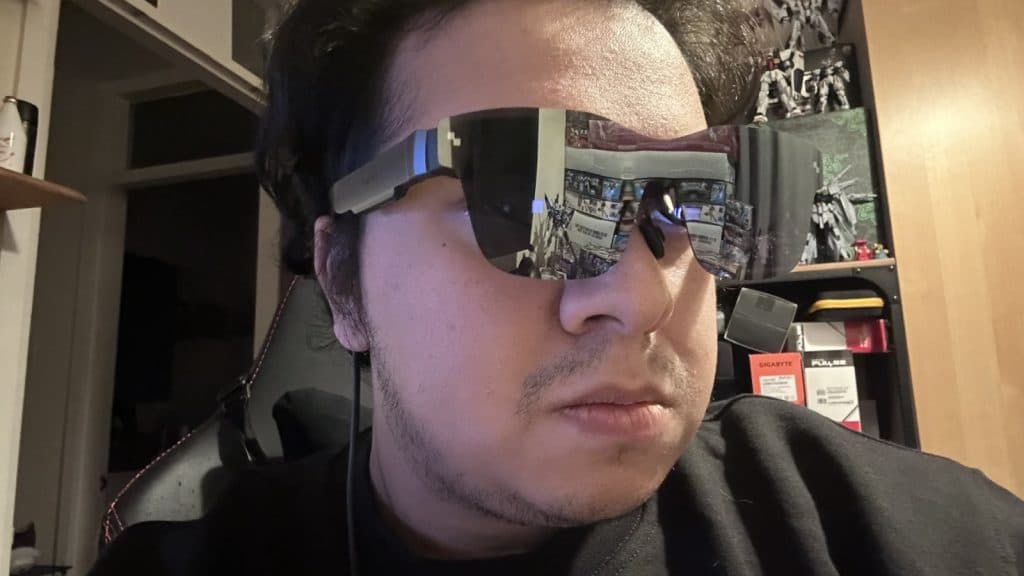 Dexerto
Dexerto The TCL RayNeo Air 2 glasses will be getting much more use out of me, especially while my partner is hooked on Final Fantasy 14 on our TV. But, when spending this much on any piece of tech, you need to understand the downsides. For the most part, the screen mirroring is the main feature and the AR nature of the glasses is less pronounced and feels somewhat underbaked.
The verdict: 3/5
The lightweight nature of the glasses makes it excellent for watching TV shows or movies, but the fringing on the edges makes it less suited for gaming, unless you eventually get used to it, which can put a strain on your eyes. If the content displayed was a touch smaller than the lenses themselves, I suspect that this issue could have been averted entirely.
I still want to use these more after the review period, since it’s just so incredibly handy, especially if you have a capable gaming handheld and still crave a big-screen experience.
If you click on a product link on this page we may earn a small affiliate commission.